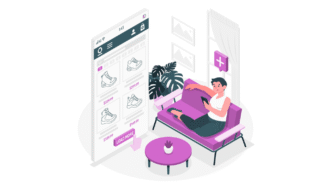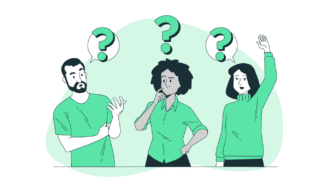LESSON OVERVIEW
With this intermediate lesson plan, students talk about first impressions. They also watch a video about the first day in a new job, and write a self-introduction.
VOCABULARY & VIDEO
At the beginning of the lesson, students decide how important things like body language or the way someone speaks are when making a first impression. They also need to think about the last time they met a new person and decide whether the things helped them make a good impression. Then, students read a piece of advice and decide what the situation is about. Before they watch the video, students read more tips on how to make a good first impression and discuss whether they agree with them. They also have to replace words and phrases in the tips with provided words (e.g. be proactive, keep it up). Then, students watch the video and decide which of the tips they discussed are mentioned there. During the second viewing, students write down three more tips about making a good first impression. They will use the tips to do the writing task in the second part of this intermediate lesson plan. Finally, students discuss the ideas from the video and the challenges of the first day in a new job.
WRITING
Students read two self-introductions and decide which one is better. They also need to explain what is wrong with the other self-introduction. After that, students look at some topics (e.g. previous experience, skills and strengths, pet peeves). They discuss which of them a person should not include when introducing themselves to the team on their first day in a new job. Then, students read sentences from different self-introductions and choose the best phrase in each (e.g. I’m looking forward to…, I’m into…). They also decide which topics from the previous exercise the phrases are connected to. In the last task of this intermediate lesson plan, students have to prepare their own self-introductions and share them with the class. They need to use the phrases from the lesson.
Subscribe to unlock these and many other Standalone lesson with the Premium planWORKSHEETS














Great lesson!
Thanks 🙂
I feel like this lesson could’ve been approached in a more critical way, like what do you mean by “manners”? Plus, the way someone speaks says a lot about their linguistic/cultural identity and shouldn’t be regarded in terms of positive or negative performances.
Thanks, that’s a good idea. There’s always a chance to follow up speaking tasks with such in-depth discussions. As for ‘manners’, we can let students decide what they see as ‘good/bad manners’ (there’s no right or wrong answer).
And we’ll think about more cultural lessons in the future:)
This is such a great lesson plan! But I’m still looking forward to seeing a lesson plan on Present Perfect Continuous which is definitely missing between these lesson plans on tense forms.
I totally appreciate your hard work and effort!
Thanks! We will definitely think about creating a lesson plan on Present Perfect Continuous. If you have other ideas for lessons you’d like to see or just videos you like, feel free to share here or write at [email protected]
The lesson is OK but there is a big mistake in the listening comprehension activity… when it asks to listen to the first 30 seconds, none of the tips in the slide is mentioned. Could you fix this? Thanks!
Thanks for your feedback! In the first listening activity, students watch the video from 00:28 and the piece of advice is mentioned at 01:04.